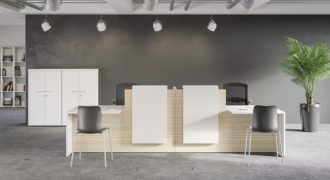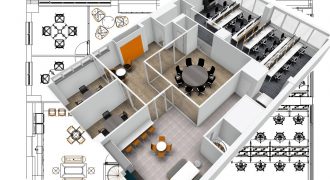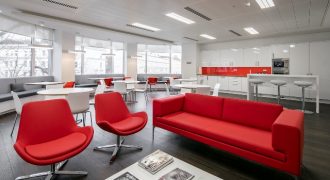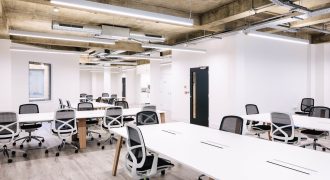
Although it might seem slight compared to other illnesses, back pain is more important than you might think, especially when it starts to become a problem for people at work. After coughs and colds it is one of the most common causes of sickness absence. 80 per cent of the population will suffer with back pain at some point in their lives.
Beginning with our days as children in the classroom, we are all subject to the negative effects of bad furniture and poor posture. Many of us continue to spend numerous hours each day as adults sitting at a desk, whether for work or on our computers at home. Or even worse for our posture, we are slumped over our phones!
Many of us are so busy that we don’t have time to stop for a moment and consider the long-term health implications of our choice of desk. The wrong desk can be significantly detrimental to your health. By ignoring simple principles of desk ergonomics we are more likely to suffer with backaches, shoulder and neck pain, carpal tunnel or headaches. Advice from occupational therapists and risk assessors, combined with guidelines provided by the Health and Safety Executive can support us in avoiding such difficulties.
Occupational therapists and risk assessors identify a number of common mistakes, which provide a useful frame of reference for auditing existing situations. Many people work at desks of the wrong shape and size, which are then positioned at the incorrect height. Often the drawers or clutter under the desk restrict movement of the legs while clutter on top of the desk impedes ease of movement on top. It is also common for people to work on a laptop at the dining or coffee table, or sitting uncomfortably on the floor.
In these days of hot-desking and tight budgets it can prove difficult to find a desk that will suit everyone who is going to sit at it. One solution can be to chose a desk with adjustable features. When ensuring that a desk ‘fits’ it is important to place your arms and legs in right angle positions, with feet flat on the floor and arms resting while typing. Height adjustable desks are perfect for ensuring that this optimum posture is maintained. By investing in new, modern desks it is easier to provide sufficient forearm support and the ability to operate within your ‘comfort zone’.
Desks in the Envol range can be adjusted from 65cm to 125cm height, so it is even possible to work standing up. This is something which is recommended not only to improve back health but also counteract the negative effects of sitting for too long. Living a sedentary lifestyle can slow down your metabolism, which is bad news for your blood pressure, blood sugar levels and cardiovascular health. So get comfortable but not too comfortable that you don’t want to get up every now and then!
A warm smile and a well-designed reception area; these are the two key items which will shape the first impression for all visitors to your...
August 6 2018What happens when your office needs a make-over? For whatever reason – a new location, upsizing, downsizing or changing priorities - businesses...
April 30 2018When Emirates Airlines needed to reduce their head office space from three floors to two, Plan-it were brought in by the architects Andraos...
October 10 2017Plan-it have recently worked with serviced offices provider Business Cube on their new premises in Worship Street, excellently located between Old...
October 5 2017


